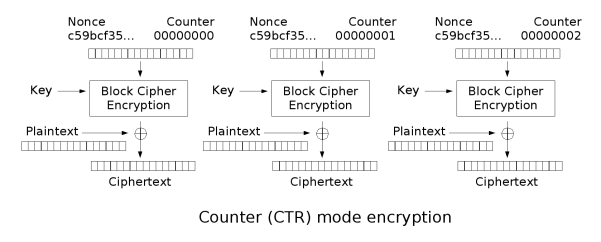Some background information, you can skip this part for the actual question
this is my third question about this topic here at stackoverflow. To be complete, these are the other questions AES with crypt-js and PyCrypto and Match AES de/encryption in python and javascript. Unfortunately my last attempt got two downvots for the original question. The problem was, even I did not know what my real question was. I just dug around to find the real question I was looking for. With the feedback in the comments, and reading some additional information, I updated my question. I excavate the right question, I think. But my problem didn't get any more views after my updates. So I really hope, that this question is now more clear and understandable - even I know what my Problem is now :D
Thank you all for making stackoverflow to this cool community - I often found here solutions for my problems. Please keep giving feedback to bad questions, so they can be improved and updated, which increases this huge knowledge and solutions database.
And feel free to correct my english grammar and spelling.
The Problem
AES in Javascript
I have an encrypted String which I can decrypt with this this Javascript Implementation of AES 256 CTR Mode
password = "myPassphrase"
ciphertext = "bQJdJ1F2Y0+uILADqEv+/SCDV1jAb7jwUBWk"
origtext = Aes.Ctr.decrypt(ciphertext, password, 256);
alert(origtext)
This decrypts my string and the alert box with This is a test Text pops up.
AES with PyCrypto
Now I want to decrypt this string with python and PyCrypto
password = 'myPassphrase'
ciphertext = "bQJdJ1F2Y0+uILADqEv+/SCDV1jAb7jwUBWk"
ctr = Counter.new(nbits=128)
encryptor = AES.new(key, AES.MODE_CTR, counter=ctr)
origtext = encryptor.decrypt(base64.b64decode(ciphertext))
print origtext
This code does not run. I get an ValueError: AES key must be either 16, 24, or 32 bytes long. When I recognized, that I have to do more in PyCrypto then just call a decrypt method, I started to investigate end try to figure out what I have to do.
Investigation
The basic things I figured out first, were:
- AES 256 Bit (?). But AES standard is 128 bit. Does increasing the passphrase to 32 Byte is enough?
- Counter Mode. Easily to set in PyCrypto with AES.MODE_CTR. But I have to specify a counter() Method. So I used the basic binary Counter provided by PyCrypto. Is this compatible with the Javascript Implementation? I can't figure out what they are doing.
- The string is base64 encoded. Not a big problem.
- Padding in general. Both passphrase and the encrypted string.
For the passphrase they do this:
for (var i=0; i<nBytes; i++) {pwBytes[i] = isNaN(password.charCodeAt(i)) ? 0 : password.charCodeAt(i);
}
Then I did this in python
l = 32
key = key + (chr(0)*(l-len(key)%l))
But this did not help. I still get a weird string ?
A???B??d9= ,?h????' with the following code
l = 32
key = 'myPassphrase'
key = key + (chr(0)*(l-len(key)%l))
ciphertext = "bQJdJ1F2Y0+uILADqEv+/SCDV1jAb7jwUBWk"
ctr = Counter.new(nbits=128)
encryptor = AES.new(key, AES.MODE_CTR, counter=ctr)
origtext = encryptor.decrypt(base64.b64decode(ciphertext))
print origtext
Then I read more about the Javascript Implementation and it says
[...] In this implementation, the initial block holds the nonce in the first 8 bytes, and the block count in the second 8 bytes. [...]
I think this could be the key to the solution. So I tested what happens when I encrypt an empty string in Javascript:
origtext = ""
var ciphertext =Aes.Ctr.encrypt(origtext, password, 256);
alert(ciphertext)
The alert box shows /gEKb+N3Y08= (12 characters). But why 12? Shouldn't it be 8+8 = 16Bytes? Well anyway, I tried a bruteforce method on the python decryption by testing the decryption with for i in xrange(0,20): and ciphertext[i:] or base64.b64decode(ciphertext)[i:]. I know this is a very embarrassing try, but I got more and more desperate. And it didn't work either.
The future prospects are also to implement the encryption in the same way.
additional information
The encrypted string was not originally encrypted with this Javascript implementation, It's from another source. I just recognized, that the Javascript code does the right thing. So I affirm that this kind of implementation is something like a "standard".
The question
What can I do, that the encryption and decryption from a string with PyCrypto is the same like in the Javascript implementation, so that I can exchange data between Javascript and Python? I also would switch to another crypto library in python, if you can suggest another one. Furthermore I'm happy with any kind of tips and feedback.
And I think, all comes down to How can I include the nonce and block count to the encrypted string? and How can I extract this information for decryption?
 .
.